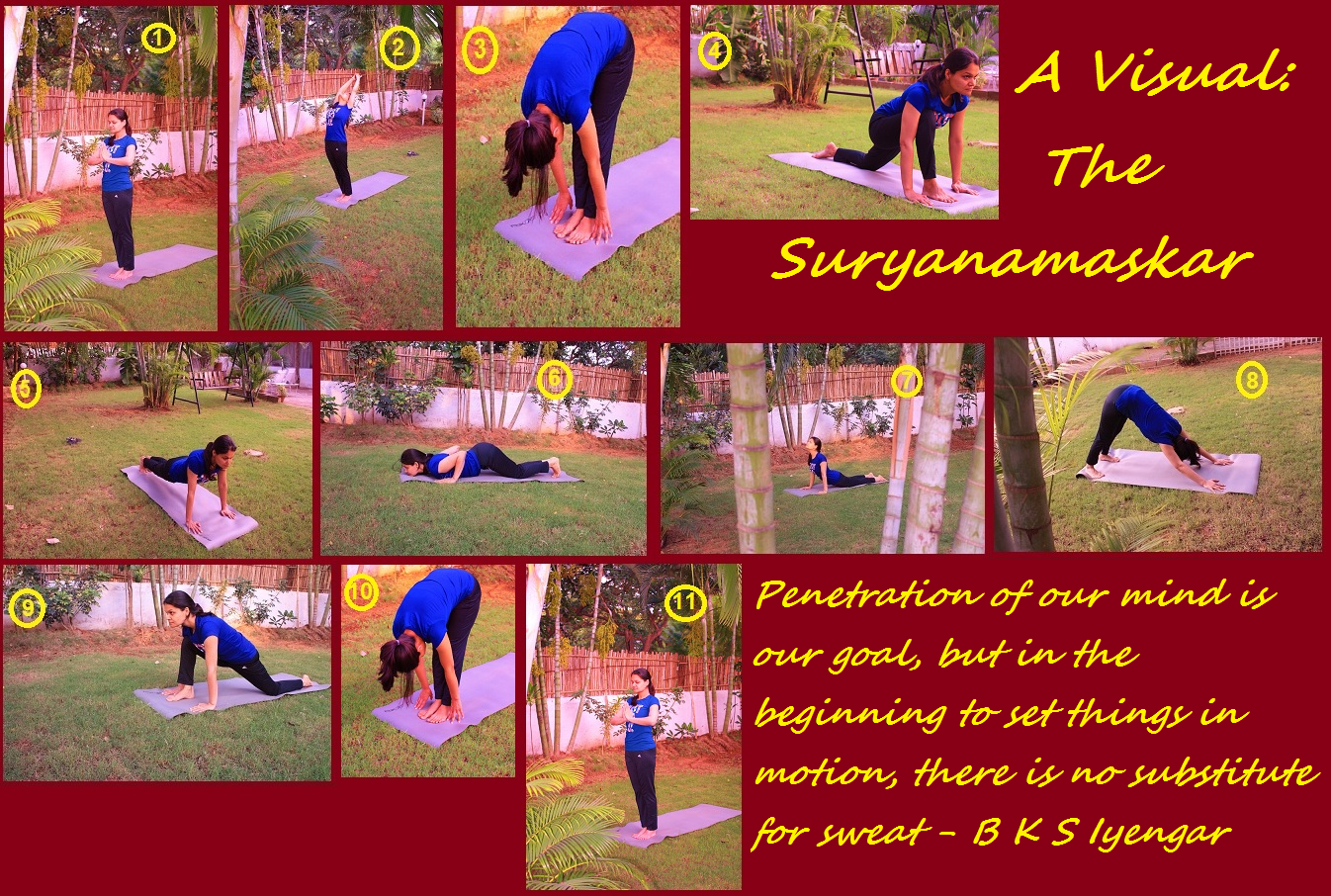The Surya Namaskar or Sun Salutation is probably the most well known yoga routine. It also happens to be a ‘complete’ routine in that it works on your stamina, strength and balance. The sequence of asanas and how to breath in coordination might be a bit daunting for beginners.
So, let’s break down the Surya Namaskar and take a closer look.
1. Namaskar Mudra – Stand up straight and tall. Make sure your toes and knees are touching. Spine should be erect and shoulders relaxed. Eyes should be closed and face relaxed. This is the first pose of the Salutation so take your time breathing deeply and motivating yourself to do the best Sun Salutations you can.
2. Hastauttanasana – Inhaling stretch your arms up and over your head. Keep our eyes on your fingers and keep your awareness on the stretch on the front part of your throat as well as your abs.
3. Padahastasana – Exhale and bring your hands all the way down to your feet. If you can place your hands flat next to your feet, then do so making sure your fingers and toes are in one line. Also, if you’ve had a knee injury then you can bend your knees. People with back problems should exercise caution when doing this pose.
4. Ashwa sanchalasana/Horse pose – Inhale and take one leg back. Look up towards the ceiling/sky. Awareness on the stretch on your things. Keep your shoulders and your hands strong.
5. Chaturanga danda asana – Exhale and take the other leg back. Your body should be in a straight line, so make sure your shoulders are strong and squared and use the power of your abs to keep your hips in line with your body. Your wrists and shoulders should be in one line.
6. Ashtanga namaskar asana – Holding your breath bring your knees down to the floor. Next bring your chest down between your hands. Finally bring your chin down. In this pose you should feel a mild stretch in your neck area.
7. Bhujangasana – Inhale and slide your upper body forward and up. Look at the ceiling and feel the stretch on your back and abs.
8. Parvat asana – Exhale and take your hips up towards the ceiling. Look at your navel. Make sure your knees and elbows are straight. In this pose your body should be in a straight line starting from your wrists all the way up your back and then down to your ankles. The body should look like a mountain – hence the name of the pose.
9. Horse Pose – Inhale and bring one leg back between your hands (the same one you had taken back in Step 4). Try to get your toes and fingers in one line. Look at the celing and take your awareness to the stretch on your thighs, your abs and the front of your neck.
10. Uttanasana – Exhale and bring the other leg back. Make sure (if you can get your hands flat on the floor), you do so with your fingers and toes in one line. Look at your knees and awareness on the stretch in the back of your legs and lower back.
11. Inhale and come back to the stithi – or the starting pose.
Let me know if you have any questions about any of the asanas. I’ve tried to be detailed about where you should feel the stretch and where you should be looking whenever you’re in a particular asana, but there might be points which require more clarification.

1 Comment
Thanks Pragya for all the information ! 🙂